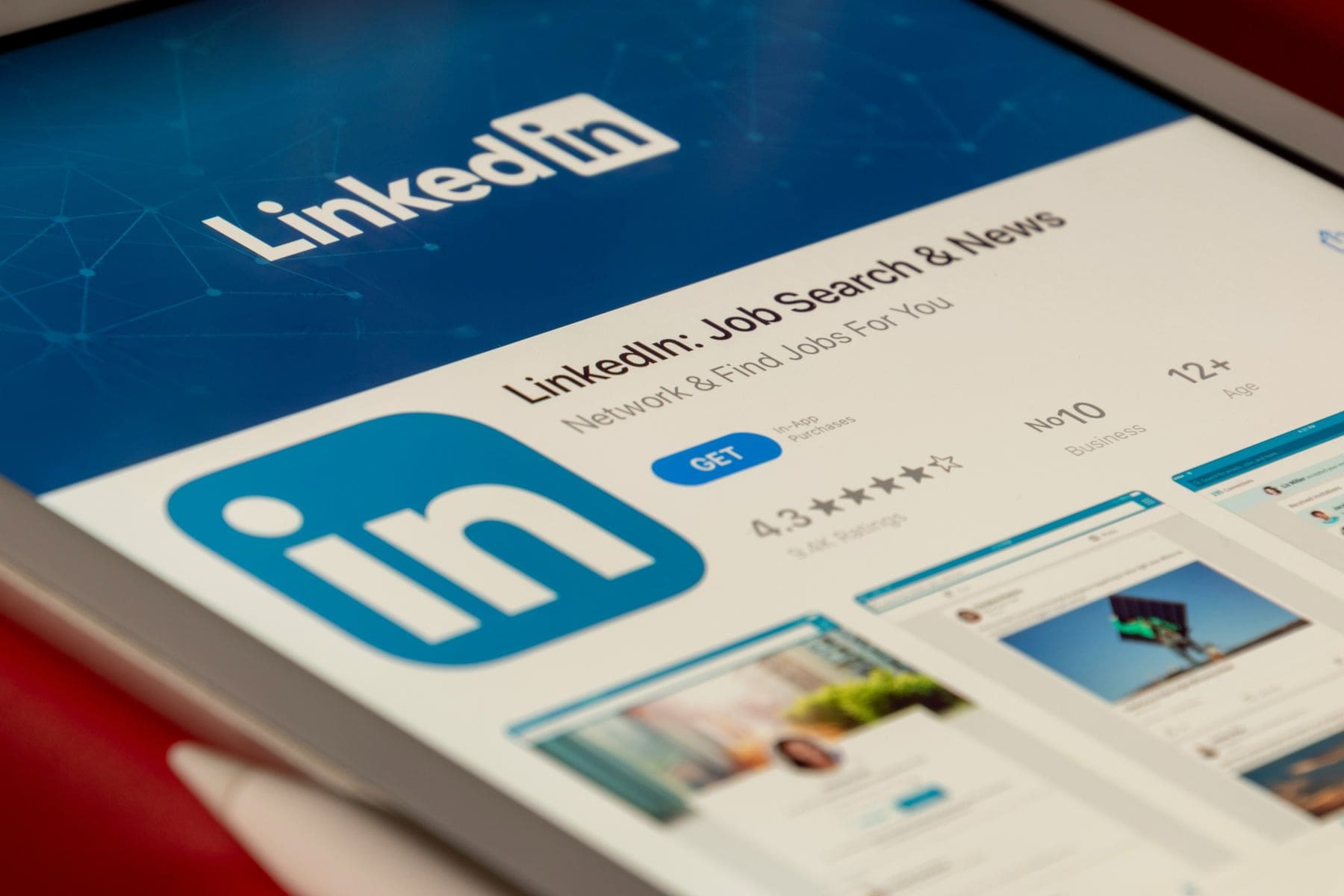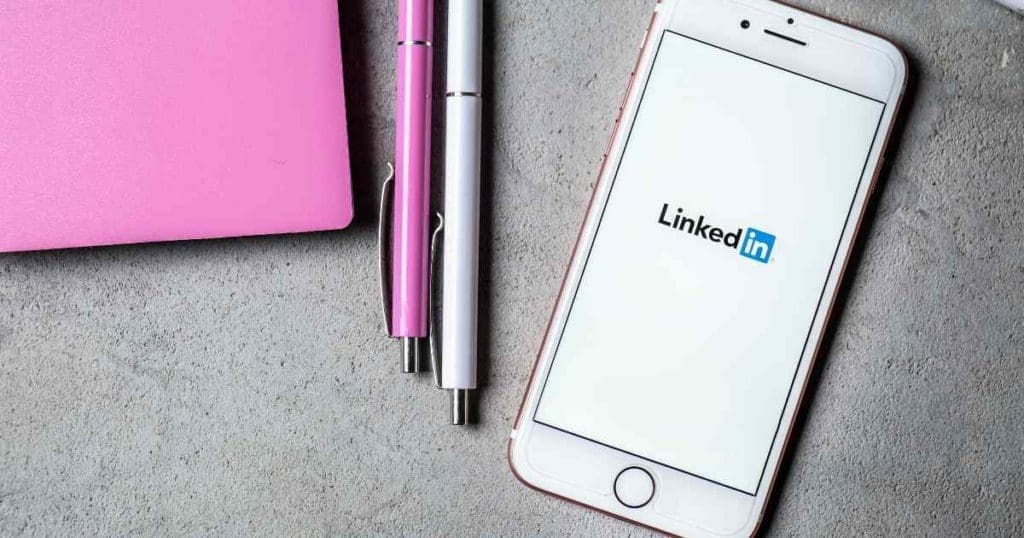Not optimizing your LinkedIn headline properly can significantly reduce your visibility and make it challenging for hiring managers to identify you as a suitable candidate for relevant positions. We’re sharing examples of LinkedIn headlines you can use when unemployed and how you can craft one that aligns with your professional goals.
Crafting Your LinkedIn Persona: LinkedIn Headline for Unemployed People
LinkedIn headline phrases like “Actively Seeking Employment,” “Available for New Opportunities,” or “Seeking a New Opportunity” clearly indicate your employment-seeking status.
Industry-specific terms, such as “[Work Industry and Position] Professional Seeking Work” or “Experienced [Industry and Position] Available for New Opportunity,” can make you appear in searches with your particular skillset and background.
These examples of LinkedIn headlines for unemployed professionals effectively communicate their availability and career goals while incorporating relevant keywords that align with current position descriptions.
| LinkedIn Headline | Details |
| Actively seeking employment | Clearly states that you’re actively looking for a career opportunity. |
| Available for employment | Indicates that you’re available and ready to take on a new role. |
| Available for new opportunities | Suggests that you’re open to exploring different career prospects. |
| Seeking a new opportunity | Expresses your desire to find a new professional challenge. |
| [Work Industry and Position] Professional Seeking Work | Highlights your industry expertise and the specific role you’re targeting. |
| Experienced [Industry and Position] Available for New Opportunity | Emphasizes your relevant experience and readiness for a new opportunity. |
| Former [Position at Department], Seeking New [Industry] Opportunities | Mentions your previous role and openness to roles in a specific industry. |
| [Industry] Professional in Transition | Indicates that you’re transitioning within your industry. |
| [Industry Position] Currently Exploring Options | Suggests that you’re actively exploring different options within your field. |
| Recent College Graduate Seeking Entry-Level [Industry] Position | Shows your graduate status and the industry you’re targeting for entry-level roles. |
Leveraging LinkedIn when you are in between jobs is critical to maximizing your network and relationships with HR managers and recruiters when finding employment. Fortunately, there are many job searching options for dealing with your employment status on your LinkedIn profile.
At MatchBuilt executive search, we’ve connected with thousands of professionals on LinkedIn over the years. Through that time, we’ve developed a handful of best practices we’d like to share for when you’re in between jobs.
LinkedIn Professional Headline Examples for the Unemployed
When you’re unemployed and actively seeking new opportunities, your LinkedIn account profile, especially the headline, becomes valuable for attracting potential employers and recruiters.
Even with your current position, there are a few practical ways to handle the situation to make it clear you’re looking for work without making it obvious that you’re out of work. Here are examples if you want to avoid mentioning that you’re looking for new work and connect with your networks.
1. Actively Seeking Employment
This LinkedIn headline is one of the best examples for unemployed professionals because it directly addresses their current situation and leaves no ambiguity. Using “Actively Seeking Employment” immediately informs prospective employers that you are available and actively pursuing new job opportunities.
It carries a proactive and motivated tone, suggesting you take a hands-on approach to your search. This can be an attractive quality for employers seeking driven and eager candidates to secure a new role.
2. Available for Employment
This concise LinkedIn headline effectively communicates your availability for new job opportunities without going into unnecessary details. By stating “Available for Employment,” you signal to employers that you are currently unemployed and open to exploring new roles. This is whether you left your previous position voluntarily or due to circumstances beyond your control.
The phrase is positive and open-minded, suggesting that you are receptive to various opportunities and willing to consider different roles or industries that align with your expertise and career goals.
3. Available for New Work Opportunities
This phrase implies a sense of growth, ambition, and a willingness to explore different career paths or industries. This LinkedIn headline perfectly balances your availability for new roles and maintains a positive, forward-thinking mindset.
You subtly indicate that you are currently unemployed without directly labeling yourself as such. This open-mindedness can be attractive to prospective recruiters seeking candidates who are adaptable, curious, and driven to continually develop their skills and expertise.
4. Seeking a New Opportunity
Using “Seeking a New Opportunity” as your LinkedIn headline, you communicate a sense of proactivity and ambition. A prospective employer will see you as a motivated candidate even if you’re self-employed.
This LinkedIn headline effectively conveys your intent to pursue a new position or professional challenge without explicitly stating your current employment status. It carries an optimistic tone, suggesting you are open to exploring various possibilities and are not limited by preconceived notions or constraints.
5. [Work Industry and Position] Professional Seeking Work
A professional headline such as “Marketing Professional Seeking Work” or “Experienced Software Engineer Seeking Work” immediately communicates your industry and the type of role you are pursuing. This targeted approach increases your chances of being noticed and considered for suitable opportunities that align with your professional goals and aspirations.
We typically recommend including your work industry and desired position to provide employers with immediate context regarding your background and areas of expertise. This will help them assess your potential fit for relevant opportunities.
6. Experienced [Industry and Position] Available for New Opportunity
The phrase “Available for New Opportunity” conveys a sense of openness and flexibility. This suggests you’re willing to explore different roles or industries that align with your skills and experience.
This professional headline is an excellent choice for unemployed job seekers because it showcases your relevant experience and industry expertise while also indicating your availability for new work. This can be particularly appealing to employers seeking candidates who are adaptable and open to growth opportunities.
7. Former [Position at Deparment], Seeking New [Industry] Opportunities
When job searching, you can also use the phrase “Seeking New [Industry] Opportunities” to show your willingness to consider diverse possibilities within a particular industry. This provides context for your experience and skills, allowing potential employers to gauge your potential fit for relevant roles quickly.
From a networking standpoint, this headline can serve as a conversation starter with industry contacts or former colleagues who may be aware of suitable opportunities aligning with the professional’s desired industry.
8. [Industry] Professional in Transition
This concise and professional headline effectively conveys your industry expertise while subtly indicating your current transitional phase. Highlighting your industry encourages the right LinkedIn profile matches based on relevant work searches, contacts, and recruiters within that particular industry.
The phrase “in Transition” implies a sense of openness and readiness for change. It suggests that you’re actively exploring new jobs and willing to consider different roles or career paths within a new sector.
9. [Industry Position] Currently Exploring Options
The “Currently Exploring Options” headline suggests proactivity and open-mindedness. It suggests that a professional is actively pursuing new challenges and willing to consider diverse possibilities within the industry or beyond.
This mindset can attract employers seeking candidates who are driven, adaptable, and open to growth opportunities. It may prompt conversations, leads, or referrals from within their existing network as contacts become aware of their active exploration of options.
10. Recent College Graduate Seeking Entry-Level [Industry] Position
This LinkedIn headline serves as an initial announcement for recent college graduates actively seeking entry-level positions within a specific industry. The phrase “Seeking Entry-Level [Industry] Position” acts as a networking tool, informing professional contacts, alumni networks, and industry connections of the graduate’s active work search and desired sector.
State your educational status and desired industry. It improves LinkedIn profile matches for seeking entry-level candidates in that particular field.
LinkedIn Current Position Examples
Deciding how to list your current position on LinkedIn when unemployed can be challenging. While some professionals opt for transparency by stating “Unemployed” or “Seeking New Position”. This approach may inadvertently advertise your employment-seeking status and potentially create bias among recruiters.
Alternatively, you can choose not to list a current employer or list yourself as “Self-employed” to maintain a degree of privacy and avoid any potential biases. Examples of current position listings on LinkedIn for unemployed individuals include:
- Open to Opportunities to Seeking New Positions
- Consultant at Self-Employed
- Freelance Photographer at Self-Employed
- Student at University.edu
- Recent Graduate from College.edu
- Seeking a Position at Unemployed
- Looking for a role in Communications at Unemployed
Several hiring managers prefer candidates who are currently employed or, at the very least, self-employed. However, the recession taught the market that even the best workers can lose their jobs.
Craft your current position listing on LinkedIn so your profile showcases your qualifications and experience. This can increase the likelihood of LinkedIn matches with relevant work opportunities and avoid potential biases from prospective employers.
Ways to Create a LinkedIn Headline When Unemployed
When unemployed and between jobs, showcase your strengths related to the career you are pursuing in the headline section of LinkedIn.
1. Toggle the “Open to Work” Option on for Recruiters
When in between jobs, you can let recruiters and your network on LinkedIn know you’re open to new career opportunities. Specify the types of work opportunities you’re interested in and your preferred location. This can make your profile show up in search results when hiring managers persist in looking for suitable candidates.
With #OpenToWork, you have control over who can see that you are ready to take on a new opportunity. You can choose who sees you’re open:
- All LinkedIn Members: This also includes recruiters and people at your current company. It also adds the #OpenToWork photo frame.
- Recruiters only: People using LinkedIn Recruiter only. To protect your privacy, we take steps to prevent LinkedIn Recruiter users who work at your current company and related companies from seeing your shared career interests, although we can’t guarantee complete privacy.
Amanda Miller, a Candidate Experience Manager at Resume and Career Services, reminds us only to toggle it for recruiter use.
Don’t use #opentowork for the public. Absolutely turn it on but set it so only recruiters can see it.
Adrienne Dinkelacker, a co-founder of The Atlas Group, a women-owned tech recruitment agency that focuses on building engineering and product teams, adds:
The best tips for leveraging LinkedIn when in between jobs is to make your profile “Open to Work” so that recruiters that are looking for people like you, can find you.
Once you apply to a job you like, find the company on LinkedIn, and send a message to the recruiter and hiring manager, your message can sound like this
Hi John, I applied for the Sales Manager job at Tesla and am really excited about learning more. My 15 years of experience make me think I’d be a great fit for the team. Feel free to reach me at 555-555-5555 or [email protected] to set up a meeting. Thanks and have a great day!
2. Optimize Your Headline Using Job-Specific Keywords
The only thing recruiters initially see in a LinkedIn search is your profile picture and headline. By default, Linkedin uses your current job title and employer in your headline. This is why, you should not leave it blank.
You have four LinkedIn headline choices when you are between jobs:
- Optimize the headline by loading it with job-specific keywords relevant to your background
- Leave your headline as if you are still with your old company. Even though it’s inaccurate and could be an issue for a prospective employer, it doesn’t advertise that you’re out of work.
- Share your previous roles
- State that you are looking for work:
When you mention that you’re looking for new work and would like your network’s help, consider stating one of the following LinkedIn headline examples for job seekers.
-
- Available for Employment
- Available for New Residential Construction Opportunities
- Seeking a New Home Builder Opportunity
- Experienced Division President Available for New Opportunity
- Former Vice President Seeking New Career Options
- New Home Sales Leader Currently Exploring Options
Amanda adds:
Don’t change your headline to “looking” or something similar. Headlines should be loaded with keywords and highlight the value you can provide a future employer.
Caitlin Weiser, a Consultant with Red Clover HR, a human resources consulting firm, added these helpful tips.
LinkedIn can be an extremely useful tool to use when in between jobs, but with the increasing number of layoffs, more people than ever are using the platform to try to land their next role. Optimizing your LinkedIn profile so that you appear in active recruiter searches is a simple way to stand out from others who are open to work.
Avoid leaving your headline vague or full of buzzwords that aren’t industry standard, and opt for specifics instead. Recruiters aren’t typing “marketing unicorn” into their search bar, so be sure to list your title, industry, and areas of expertise when creating your headline.
Your bio and job history should include a comprehensive list of your skills, experience, responsibilities, and software knowledge. When recruiters are sourcing candidates for an open role, they are utilizing job-specific keywords to find candidates that are aligned with the position, and the more of these keywords you have throughout your LinkedIn profile, the more likely you are to come up in their search.
3. Update Your Career Interests
Your career interests are only visible to recruiters outside your current employer. You can choose statuses such as “Actively looking,” “casually looking,” and “not looking but open to offers”. This lets recruiters know they can contact you.
Additionally, you can specify the job titles you’re interested in, the locations, the type of employment (e.g., full-time, part-time, contract), etc.
What to Update on LinkedIn When Unemployed and Between Jobs
While improving your headline on LinkedIn is the best thing to start with, there are several other areas of your profile you’ll want to optimize and update when you’re in between jobs. We asked career coaches, HR managers, and LinkedIn experts what to do first when you are in between jobs.
Use a Professional Photo
Your professional image is the first thing networking contacts and hiring specialists will see, so it should reflect the professional you.
Lydia Abbot, a content marketer at LinkedIn, suggests the following tips for picking the right LinkedIn photo:
-
Pick a photo that looks like you. Use a high-resolution image
-
Make sure your face takes up at least 60% of the frame
-
Be the only person in the picture
-
Get someone else to take the picture for you
-
Choose the right expression
-
Avoid distracting backgrounds
-
Wear what you’d wear to work
-
Take the photo in soft, natural light
-
Use filters wisely
Improve the Summary Section
Revisit your LinkedIn summary section to make sure it provides you with a crisp and professional online presence. We’ve read thousands of LinkedIn summaries over the years; some pop and allow for a great introduction. As a LinkedIn member, you may want to double-check your summary section to make sure it provides you with a crisp and professional online presence.
We recommend you use first-person, make it easy to skim, and maximize the first two lines of your summary. The content should be well thought out, concise, and leverage industry keywords.
In addition to your summary, ensure that every part of your profile is complete. Karissa Parris, the Head of Talent Acquisition at Writer’s Block, a career development initiative that aims to help those who may not have the resources necessary to increase their strength as job applicants, suggests the following.
-
Complete your profile in full! Many candidates don’t realize that when applying on LinkedIn, the site generates a resume based on their profile, which recruiters see on the backend. If your profile is incomplete, you’re likely to be overlooked.
-
Recruiters are looking for “warm talent,” in other words, candidates who are most likely to respond to InMails. When candidates don’t respond, it impacts our data, so candidates with designated spotlights like “open to work,” have company connections, or have engaged with the brand are more likely to be contacted.
-
Leverage job descriptions to identify keywords to include on your profile. When recruiters conduct boolean searches, you’re more likely to be pulled into their candidate search!
Write Articles
When writing an attention-grabbing article, share your industry knowledge and expertise, keep your articles around 700 words for easy readability, and follow good web-writing habits.
Ashley Steinmetz, an award-winning women’s business coach and business podcast host, recommends the following:
Start writing LinkedIn articles daily and featuring them on your profile. Write articles on subjects that showcase your zone of genius. Share these articles with your network and also LinkedIn groups specific to the industry you want to work in.
Recruiters and managers in this group will see your articles. Ask for testimonies from past coworkers, bosses, and clients, and move the testimony section of your profile to be the first thing people see.
Add the Projects You’ve Worked On
The key is to emphasize the type of project important to your target employers to demonstrate your value as a prospective employee, whether a specific area of expertise or an industry term common in your field. Add links to these projects in your “Summary” and “Projects” sections and include meaningful attachments and photos.
Reach Out to Professional Recruiters
You can message them about any open positions they may have when you are between building industry jobs. Respond appropriately to recruiters when they reach out to you.
Be Active and Contribute
To be active and communicate with your connections, share updates, publish posts, and participate in groups. You can also endorse your connections for their skills, use the ‘Companies’ Feature, and use the Jobs Feature to network.
Contact Your Network Directly
HelpGuide.org says connecting with others gives much-needed encouragement, fellowship, and moral support. Remember to cancel your LinkedIn Premium plan once you’ve found new work.
Amanda suggests:
Research companies that you’re interested in and the people who work for those companies, and reach out to them to see how you can help. When applying for jobs, reach out to the person who posted it (or search for them) and make a personal connection.
Get Recommendations
On LinkedIn, seek recommendations from former managers and colleagues. Request them from professionals with whom you have a positive rapport. Offering recommendations first can encourage reciprocation.
Create a Custom LinkedIn URL
Customize your LinkedIn URL to create a professional and memorable link to include on your resume and share with employers during the application process. Maintain active and professional work-related social accounts, as many hiring managers review candidates’ online presence across various platforms.
Check the Details
Finally, double-check that your LinkedIn details, headline, and other information match the resume you submit to recruiters.
Related Questions
What Should Your LinkedIn Headline Say When You’re Unemployed?
When unemployed, your LinkedIn headline should showcase your relevant skills and experience rather than state your current position as “unemployed.” Instead, optimize your headline with industry-specific keywords highlighting your qualifications for your desired roles.
What Is a Good Headline for LinkedIn for Job Seekers?
A good LinkedIn headline for applicants should clearly communicate their current status as active candidates while emphasizing their professional strengths and the specific opportunities they’re seeking. This allows potential employers to identify their availability and relevant background quickly.
How Do You Professionally Say You’re Unemployed?
Instead of directly stating “unemployed” in your LinkedIn headline, I advise using more constructive language highlighting your career aspirations and availability for new roles. This approach demonstrates professionalism and helps potential employers better understand your situation while focusing on the value you can offer.
Should You Update Your LinkedIn Profile and Headline Or Not?
You can update your LinkedIn account profile and headline depending on your personal preference and approach to showcasing your educational achievements and professional background. For example, you can put an end date on your last position without adding a new one, guaranteeing technical accuracy without highlighting your unemployed status.
Conclusion
Showcasing your career aspirations and qualifications through a strategic LinkedIn headline can significantly enhance your chances of being noticed by hiring managers searching for candidates with your specific skills and experience. A compelling headline increases your visibility while demonstrating your proactive approach and commitment to securing a new role.
![10 LinkedIn Headline Tips for When You Are In Between Jobs [2024 Guide]](https://b3418441.smushcdn.com/3418441/wp-content/uploads/2019/12/10-linkedin-tips-for-between-home-builder-jobs-300x171.png?lossy=2&strip=1&webp=1)









